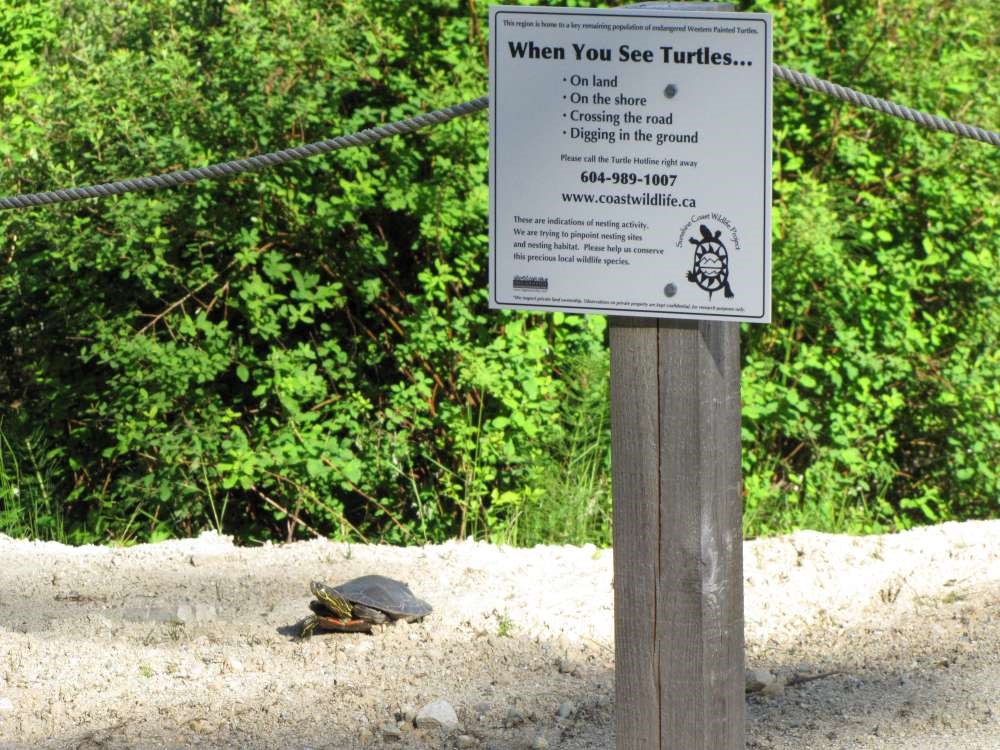Building Nesting Beaches for Turtles
A biological treasure, the Western Painted Turtle has delighted Sunshine Coast residents for generations. Yet this turtle, BC’s only native freshwater turtle species is declining and faces multiple significant threats. Our Pacific Coast population is federally Threatened and provincially Red-listed.
Lack of suitable nesting habitat is one of the most important factors threatening turtle populations on the Sunshine Coast. Western Painted Turtles typically nest in sunny, south-facing beaches, shorelines and clearings around lowland lakes. Such areas are also highly prized by humans, and substantial habitat has been lost to make way for human activity.
Lack of nesting habitat threatens the long-term chance of turtle survival for two reasons:
1) Each year, many female turtles are killed crossing roads searching for suitable nesting habitat or attempting to nest at the edge of the road. Because the life history of this species relies on high adult survival and longevity, the loss of each reproductive female from the population can be devastating.
2) The lack of suitable nesting habitat often forces turtles to attempt nests in unsuitable places, such as hard packed gravel on road shoulders or highly used public beaches and campgrounds. Nests laid on road shoulders often fail to hatch either because they are disturbed by humans and their pets, or because the conditions in the nest are unsuitable to permit egg and hatchling survival.
To address the problem of lack of nesting habitat, with the assistance of many community volunteers and in-kind donations from local businesses, the Sunshine Coast Wildlife Project has built 20 new turtle nesting beaches at various lakes. The project has been a tremendous success. Number of road mortalities and reports of turtles on roads have decreased dramatically compared with previous years. At most sites, our new nesting beaches have been used by many nesting turtles. Thousands of baby turtles have been observed emerging from these new nesting beaches, indicating the success of this habitat enhancement and threat mitigation effort.






